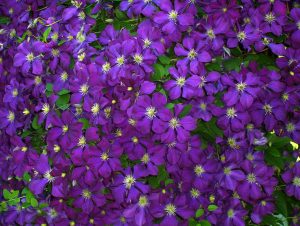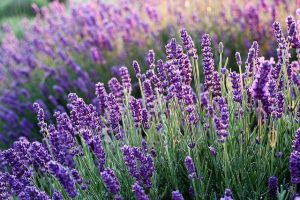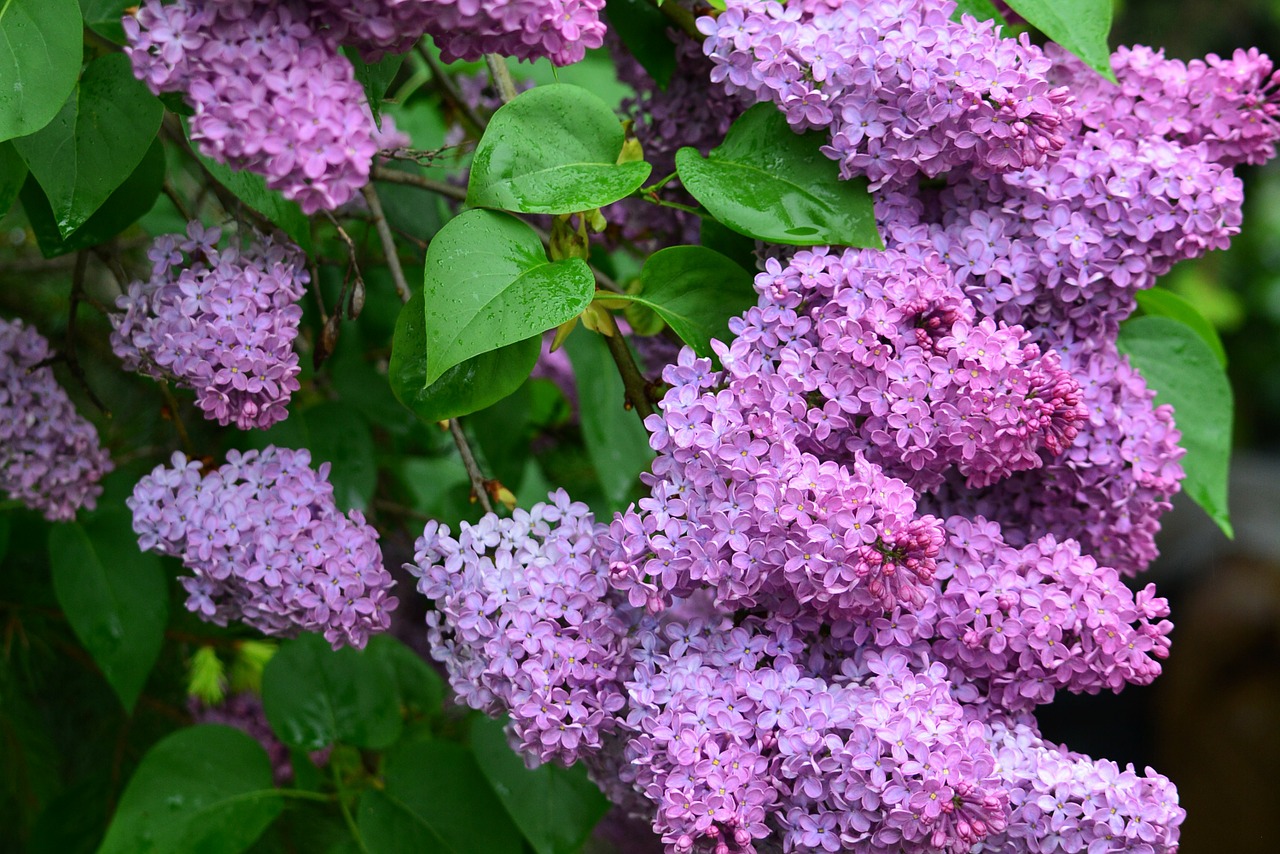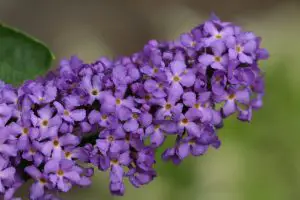Last Updated on April 15, 2024 by Real Men Sow
Adding purple-colored plants is a great way to bring more color to your garden. This list displays purple shrubs, climbers and perennials with purple color. You can also find their maintenance guidelines, which will help to determine which plant is best suited for your gardening time.
Top Purple Shrubs To Grow
Buddleia Dreaming Purple Shrub
Buddleia is a popular shrub for gardens, therefore, it can be found in many UK gardens. It produces fragrant purple flower barbs with white heart from June to September. Because they are so attractive to butterflies, including other beneficial insects, the Buddleia is often called the Butterfly Bush. It can grow to approximately 45 cm in height and to a maximum of 90 cm in spread. It is easy to care for.
Hebe Purple Shamrock
Hebe Purple Shamrock, sometimes called the Hebe “Neprock”, is adaptable to all soil conditions. It can tolerate full sun or partial sun and shady areas. It blooms during summer. The plant’s purple flowers are short and the leaves have a narrow shape. In the winter, its leaves display a purple color as well. Hebe Purple Shamrock, an Ornamental shrub, is classified as an Evergreen. It can grow to a height of approximately one meter (3.25 ft). The Purple Shamrock requires very little maintenance and can be grown with minimal care.
Cotinus Coggygria
This deciduous shrub, also known as smoke tree in the anacardiaceae group, is found most often in Asia and southern Europe. This plant needs full sun exposure and requires moderate maintenance. It blooms between May and July. The plant can produce multiple stems in a variety of colors, including yellow, orange, purple-red, and even white. This bush is susceptible to verticillium wilt, leaf spot, and rust.
Rose Purple Tiger
The Purple Tiger Floribunda rose blooms in the spring (from May to October) and can reach 90 cm height to 60 cm width. It’s easy to care for and produces vibrant purple flowers with white stripes. It has beautiful flowers but is susceptible to blackspot.
Callicarpa Bodinieri
This plant is very attractive to butterflies and bees. Bright, shiny, purple fruits in early autumn are a hallmark of the ‘Profusion” shrub. It can withstand full sun and partial shade but will blossom and produce the most fruit when it is fully sunlit. The plant is 120 cm to 180 cm in height, and 120 cm to 180 cm wide. It is easy to grow and requires little maintenance.
Cistus X Purpureus
This shrub, also known as the Orchid Rose, is strong and ageless. It grows to 120 cm in height and 180 cm in width. This evergreen is a cross between Cistus Incanus Creticus and Cistus Ladanifer. This shrub is tolerant to wind, salt spray and sandy soil. This shrub can withstand drought conditions, therefore, requires little water and is low-maintenance.
Climbing Plants or Climbing Purple Shrubs?
 Clematis Viticella Etoile Violette
Clematis Viticella Etoile Violette
This deciduous vine was first bred in 1885. Its notable characteristics earned it the prestigious Award of Garden Merit of Royal Horticultural Society. This plant produces dark violet-purple flowers that can reach 10 cm in width. Clematis Viticella Etoile Violette flowers from mid-to-late summer. The climber is most at home in full sun to partial shade. This purple shrub eventually grows to three to 4.5 meters with a spread of between 90 and 180 cm. It requires very little maintenance.
Clematis Romantika
Romantika is a deciduous climber purple shrub that produces the deepest purple flowers. The flowers may appear nearly black when they are newly opened. The plant can be grown in full sun or partial shade and will bloom from mid-summer through early fall. The plant eventually grows to 1.5-2.5 meters in height with a spread between 1 and 1.5 meters. This can take anywhere from 2 to 5 years. This plant is susceptible to aphids or caterpillars. The petals can also be eaten by earwigs. This plant may also be susceptible to clematis slime flux and clematis wilt.
Clematis Daniel Deronda
The Daniel Deronda, a deciduous climber with a hearty nature, produces dark violet-blue flowers. This plant will produce multiple flowers from each stamen, with one flower in the late spring and two in the early summer. The plant can be grown in either full sun or partial shade and will reach a height of 1.5 to 2.5 metres with a spread between 0.5 to one meter. This plant is easy to care for and will reach its final height in about two to five years.
Clematis macropetala Jan Lindmark
Jan Lindmark produces bell-shaped, mauve-purple flowers in the spring. It is a deciduous climber and requires moist soil. This plant can grow to 1.5-2.5 meters in height with a spread between 1-1.25 meters. Young plants may be susceptible to slugs and aphids.
Perennials with Purple Blooms
 Lavender, the easy purple shrub
Lavender, the easy purple shrub
It is an easy-to-grow evergreen perennial purple shrub that produces countless beautiful aromatic flowers. Because the soil is heating up, lavender should be planted in April or May. It can also survive in drought conditions. Lavender thrives in poor to moderately fertile soil. Lavender blooms best in spring. It can reach a height of 30 cm-1 meters and then spreads out to a maximum of 1 meter. You may be concerned about root rots, which can occur in heavy or wet soils and can be ravaged by pests and insects.
Anemone ‘Prinz Heinrich’
The full name of this perennial is Anemone hupehensis var. japonica Prinz Heinrich’ or Japanese Anemones Prinz Heinrich’, and it produces 10 to 15 overlapping petals. It can be grown in full sun or partial shade and will eventually reach a height of 0.5-1 m within two to five years. Once the plant has reached maturity, it will spread rapidly. This plant is not a good choice for moving. It should be disposed of to leaf and bud mite worms. Powdery mildews can also affect this plant.
Echinacea Purpurea
“Mistral” is a deciduous perennial that produces daisy-like flower heads from summer to fall. It has branched stems. It thrives in well-drained, humus-rich soil. This plant is usually immune to pests and diseases.
Verbena Bonariensis ‘Lollipop’
From early summer through early fall, ‘Lollipop” produces fragrant lavender-violet flowers. It is one of the Award of Garden Merit recipients of Royal Horticultural Society. The plant requires little to no maintenance and is among the easiest perennials you can grow. It attracts butterflies, hummingbirds and other insects throughout the year. It can withstand extreme heat and humidity and, once mature, it can withstand drought without wilting. The height of ‘Lollipop’ is 60 cm, with a spread of 60cm.
Erysimum ‘Bowles’s Mauve’
From mid-spring to fall, Erysimumx linifolium blooms in vibrant colors for months. It is an evergreen perennial in mild winter regions. This perennial, which won the Award of Garden Merit, reaches heights of 60 to 90 cm. It attracts butterflies and hummingbirds. Although it is easily ignored by deer and rabbits, it can withstand drought. This plant can also survive in partial shade, but prefers bright sunlight. It flowers in the spring, summer and fall. It is easy to maintain.


